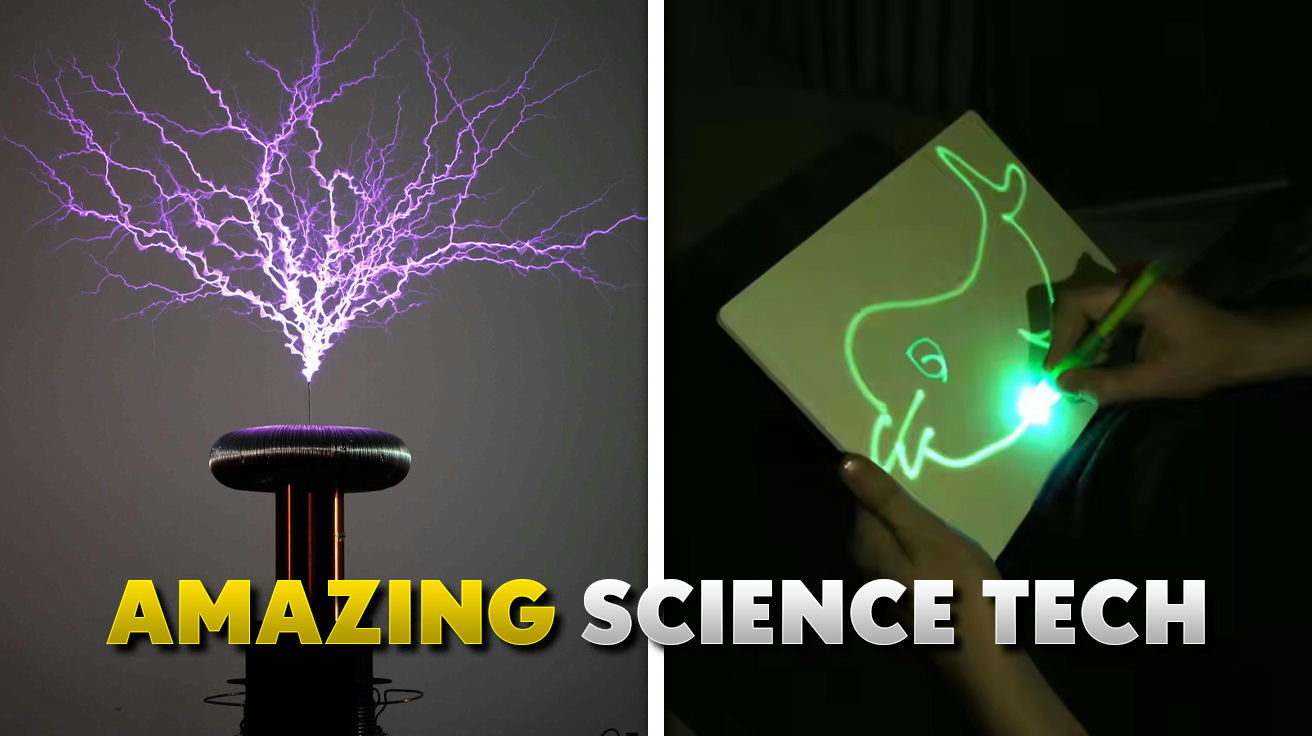Ever wondered what makes ordinary objects reveal extraordinary science? Simple gadgets can transform abstract principles into tangible experiences anyone can understand. These devices bridge the gap between textbook theories and real-world applications, making complex concepts accessible through hands-on demonstrations. They range from kitchen experiments to desktop marvels that seem to defy physics.
Let me guide you through a fascinating journey from Level 1 to Level 100 science gadgets that will change how you see everyday phenomena.
11. Potato Battery: Entry-Level Power Generation
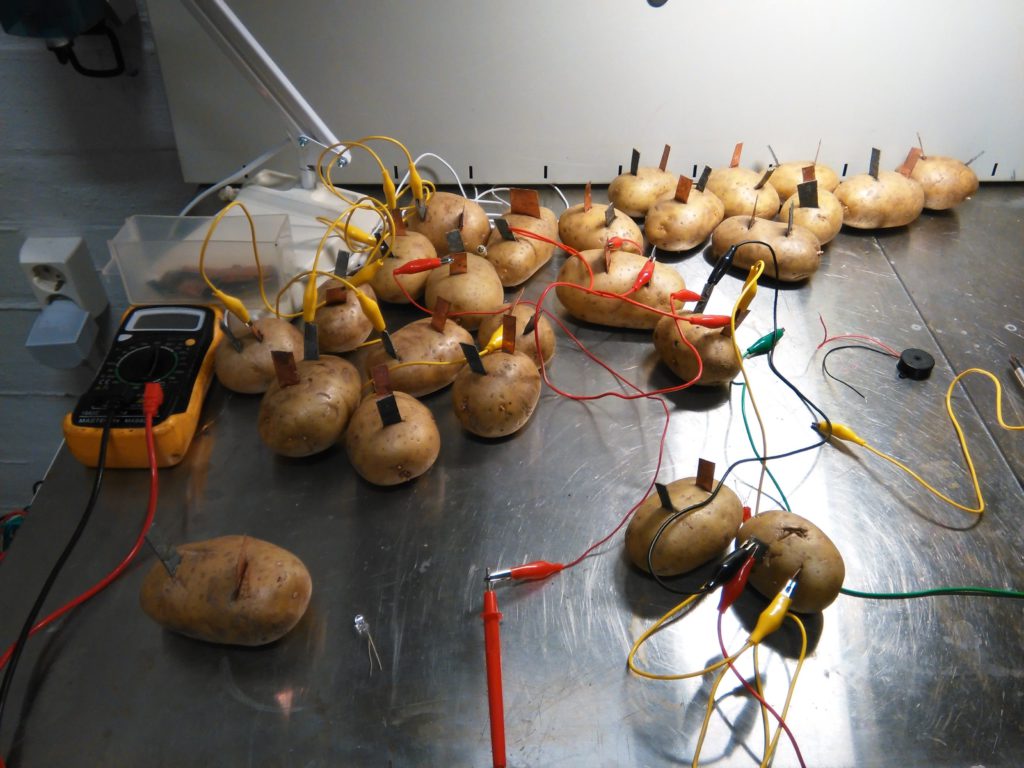
Need electricity without outlets? The Potato Battery turns grocery store produce into functional power sources. Push zinc and copper electrodes into a potato and watch chemistry generate electricity. The acids inside interact with the metals, producing 0.5 to 0.8 volts per potato – enough to power small LEDs or digital clocks.
What you’re seeing isn’t magic but electrochemistry at its most fundamental. Multiple potatoes wired in series create higher voltages for more demanding applications. According to the Journal of Chemical Education, these food-based power cells last approximately one week before depleting.
Next time you’re caught without power, grab some potatoes and metal scraps for a science-based emergency light source.
10. The No-Spill Pizza Peeler: Surface Tension Made Useful

Tired of toppings sliding off your slice? The No-Spill Pizza Peeler prevents this common culinary catastrophe. This kitchen tool employs non-stick silicone surfaces to work with surface tension principles rather than against them.
Liquid cheese and toppings prefer sticking to themselves instead of the peeler’s surface, maintaining their integrity during transfer. Consumer testing shows these devices have earned an average 4.3/5 star rating across major shopping platforms.
The Journal of Food Science validates the physical principles, though mastering the technique requires practice. When hosting your next dinner party, you’ll appreciate how this tool keeps messy transfers from ruining your presentation.
9. Stirling Engine: Heat-to-Motion Converter
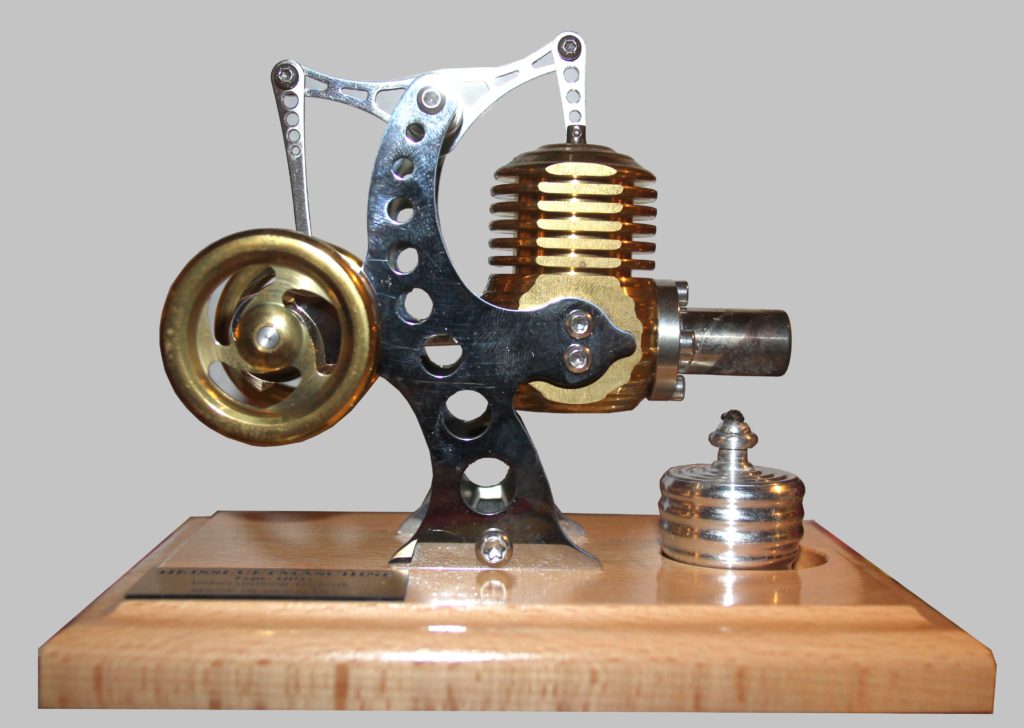
The Stirling Engine converts even small temperature differences into hypnotic mechanical motion without combustion. Requiring just a 20°C temperature differential, these elegant machines transform thermal energy into rotational motion through sealed gas expansion.
How does it work? Sealed gas expands when heated and contracts when cooled, driving a piston in continuous cycles. The resulting motion produces 10-3000 RPM depending on model and heat source quality. NASA technical documents highlight these engines’ silent operation compared to conventional motors, though they generate less power. Struggling to explain energy conversion? This device solves the abstraction problem through direct visual demonstration.
8. Perpetual Motion Machine: The Energy Conservation Teacher

If you’ve ever wondered whether endless energy is possible, the Perpetual Motion Machine provides a deceptively clear answer. Despite appearances of continuous movement, these devices rely on hidden 12V electromagnets that provide the crucial energy input.
Scientific American publications debunk the perpetual motion concept while explaining why these demonstrations remain valuable. The subtle energy boost comes from electromagnets giving the spinning components just enough push to overcome friction.
Their true value lies in teaching critical thinking—once observers understand the concealed mechanism, they grasp fundamental laws of thermodynamics and energy conservation. During science demonstrations, this device provokes more critical questions than almost any other exhibit.
7. Levitation Device: Magnetic Forces Visualized

Watching objects float in mid-air without support makes invisible forces suddenly observable. The Levitation Device uses carefully calibrated neodymium magnets to create opposing fields that hold items weighing 50-300 grams suspended against gravity. This technology demonstrates how some gadgets can feel like real-life superpowers, turning the impossible into reality.
The physics operates through precise magnetic repulsion generating lift that counteracts gravity’s pull. Many commercial models incorporate LED lighting to enhance the visual effect. Studies published in IEEE Transactions on Magnetics document these devices’ sensitivity to environmental disturbances like vibrations and air currents. The ability to physically touch these invisible forces transforms abstract concepts into tangible experiences that even young children can understand.
6. Mova Globe: Passive Energy Harvesting

Placed on a shelf in ambient light, the Mova Globe spins continuously without batteries or cords. Available in 4.5″ to 8.5″ diameters, these spheres harness room light through hidden photovoltaic cells to create perpetual rotation.
Multiple physics principles combine in this device: solar energy capture, magnetic field interaction, and fluid dynamics. The inner globe contains microscopic solar panels that power a motor anchored to Earth’s magnetic field, while floating in friction-reducing liquid. Popular Science investigations note these devices require adequate ambient lighting and can be disrupted by strong nearby magnetic fields.
Consumer reviews average 4.5/5 stars across major platforms. If you’re teaching about renewable energy systems, this elegant demonstration showcases how multiple clean power principles can work together seamlessly.
5. Super Precision Gyroscope: Angular Momentum Demonstrated

When a spinning top falls over in seconds, the Super Precision Gyroscope instead balances indefinitely on a string or pencil point. These precision-crafted instruments spinning at 10,000-25,000 RPM demonstrate stability principles used in navigation systems, spacecraft, and smartphones.
Constructed from high-grade brass or stainless steel, these precision instruments showcase angular momentum—the property that resists changes in rotational orientation. The American Journal of Physics publications detail how these devices require periodic maintenance for optimal performance.
When spinning at full speed, the gyroscope can balance on seemingly impossible points, appearing to ignore gravity’s pull. The same principles that keep this small device stable help massive ships remain upright in rough seas and satellites maintain precise orientation in space.
4. Holographic Fan: Persistence of Vision Trick

Imagine 3D objects floating in empty space without special glasses or screens. The Holographic Fan creates this illusion through rapidly spinning blades equipped with programmed LEDs rotating at 1000-1800 RPM, with resolutions from 450-1024 pixels. For those interested in more cutting-edge visual technologies, explore some of the coolest tech gadgets you didn’t know were on Amazon.
The technical principle involves timed light patterns moving faster than your visual processing can track. These displays offer viewing angles of 170-180 degrees with no actual projection surface. Major corporations including Coca-Cola and BMW employ these devices for promotional displays.
Journal of Display Technology research confirms these aren’t true holograms but persistence of vision illusions—your eyes can’t track individual flashes, so your brain interprets the sequence as continuous forms. Need to capture attention at your next trade show? This optical illusion consistently stops passersby in their tracks with its seemingly impossible floating images.
3. Tesla Coil: Wireless Electricity Made Visible
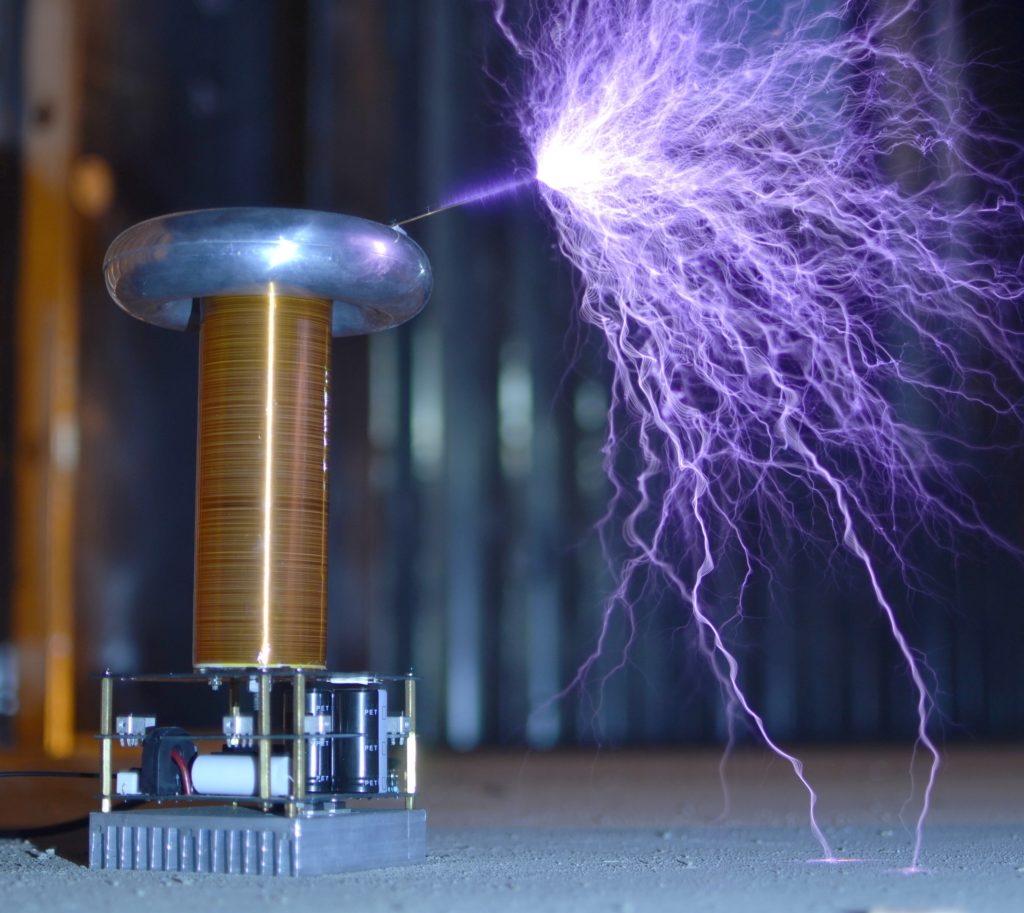
The Tesla Coil transforms ordinary household current into miniature lightning that jumps through air. Using resonant transformer circuits, these devices convert standard electricity into 50,000 to several million volts at frequencies between 50 kHz to 1 MHz.
Spectacular electrical arcs jump through air, demonstrating electromagnetic principles in dramatic fashion. Nearby fluorescent bulbs light up without wired connections, showing wireless power transmission. Some advanced models modulate discharge frequencies to create audible tones—essentially playing music through lightning.
IEEE Transactions on Plasma Science research documents the significant electromagnetic interference these devices generate. When explaining Nikola Tesla’s pioneering work feels abstract, watching electricity leap through air provides an unforgettable visual connection to his revolutionary concepts.
2. Laser Drawing Board: Chaos Theory and Light
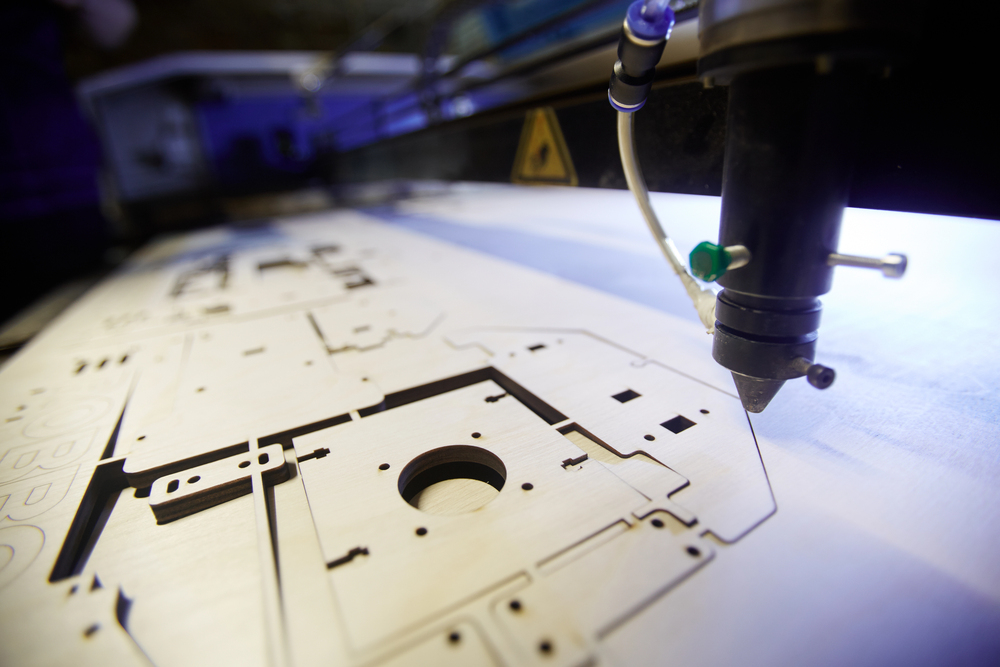
Creating art with physics happens when you aim a laser pointer at these specialized boards. These phosphorescent surfaces capture light patterns from UV or violet laser sources (typically 405nm wavelength), revealing how tiny variations create dramatic visual differences.
The illuminated trails remain visible for 30 seconds to 5 minutes before gradually fading. Available in dimensions from 8×10 inches to 24×36 inches, these devices reveal how tiny variations in initial conditions create dramatically different outcomes—the hallmark of chaos theory.
Optical Society research publications note the limited color palette (usually single-color glow) and emphasize proper laser safety protocols. Frustrated by trying to explain complex mathematical concepts like chaos theory? These visual tools transform abstract equations into beautiful, tangible patterns anyone can understand.
1. Cast Saw: Oscillation vs. Rotation

Cutting through plaster without harming skin seems impossible, yet the Cast Saw accomplishes this through clever physics. Unlike circular saws that rotate continuously, these medical tools oscillate their 2-3 inch blades at 10,000-20,000 movements per minute.
This oscillation pattern creates the key safety feature: rigid materials like plaster and fiberglass fracture under the rapid back-and-forth motion, while elastic skin simply vibrates in sync with the blade without being cut. Operating at 70-80 dB noise levels, these devices can startle patients despite being safe.
Medical journals document how this technology has revolutionized orthopedic care. The distinct oscillation mechanism solves a critical medical problem—how to safely remove rigid materials without risking injury to the soft tissue underneath.

